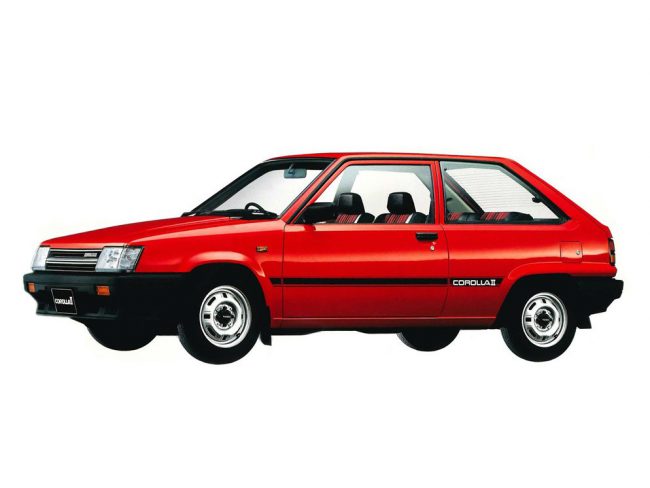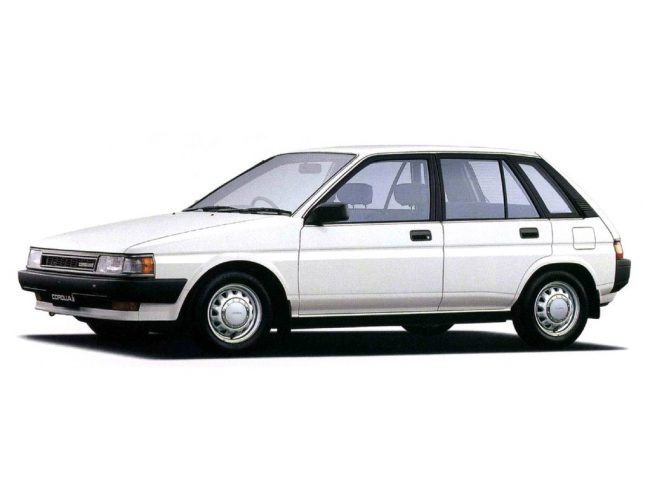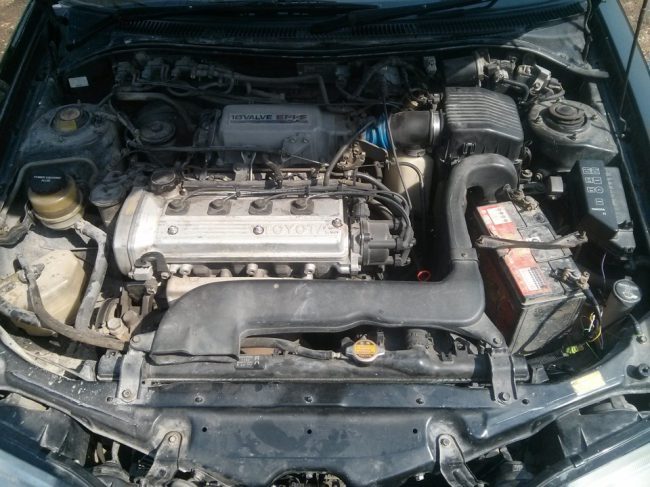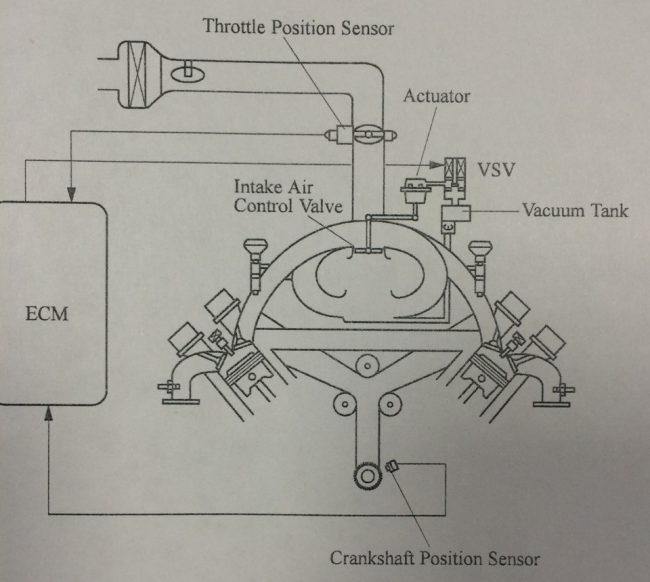
Toyota Corolla 2 engines
Content
In the early seventies of the last century, Japanese auto corporations picked up the idea of Europeans who found salvation from the consequences of the oil crisis in a radical reduction in the size of cars for those who could not afford to spend extra money for an extra meter of "iron". This is how the European class B was born. Later, the designation “subcompact” was assigned to it: cars 3,6-4,2 m long, as a rule, two-door with a technological trunk - the third door. One of the first Japanese cars of this class is the Toyota Corolla II.

15 years of continuous evolution
In various sources, the Japanese habit of smoothly flowing the features of one car model into another has led to discrepancies about the start / end dates for the production of Corolla II series cars. Let's take as a basis for the series the first car of the L20 scheme (1982), the final one - L50 (1999). It is generally accepted that Corolla II is an experimental base for creating the world-famous Toyota Tercel model.
This car is very similar to the Corolla FX produced in parallel. The main external difference is that in the C II line, the first car was a five-door hatchback. And in the future, the designers experimented with this scheme a couple of times. Only in the early nineties Corolla II finally began to roll off the assembly line with three doors.

Serial layout C II from 1982 to 1999:
- 1 - L20 (three- and five-door hatchback AL20 / AL21, 1982-1986);
- 2 - L30 (three- and five-door hatchback EL30 / EL31 / NL30, 1986-1990);
- 3 - L40 (three-door hatchback EL41 / EL43 / EL45 / NL40, 1990-1994);
- 4 - L50 (three-door hatchback EL51/EL53/EL55/NL50, 1994-1999).
Toyota's "car for everyone" had a happy fate in the USSR. Five-door Corollas entered the country through Vladivostok, both in right-hand drive and in the usual European version with left-hand drive. Until now, on the streets of cities in the countries of the former Soviet Union, one can meet vigorously puffing single copies of the Japanese automobile expansion.
Engines for Toyota Corolla II
The modest size of the car saved the minders from having to develop engines with a lot of new products and expensive systems. Toyota Motor Company management chose the C II series for experimentation with small to medium power engines. In the end, the 2A-U engine was chosen as the base engine. And the main ones for the C II cars, as in the case of the FX, were the 5E-FE and 5E-FHE motors.
| Marking | A type | Volume, cm3 | Maximum power, kW / h.p. | Supply system |
|---|---|---|---|---|
| 2A-U | petrol | 1295 | 47 / 64, 55 / 75 | OHC |
| 3A-U | –:– | 1452 | 51/70, 59/80, 61/83, 63/85 | OHC |
| 3A-HU | –:– | 1452 | 63/86 | OHC |
| 2E | –:– | 1295 | 48/65, 53/72, 54/73, 55/75, 85/116 | SOHC |
| 3E | –:– | 1456 | 58/79 | SOHC |
| 1N-T | turbocharged diesel | 1453 | 49/67 | SOHC, port injection |
| 3E-E | petrol | 1456 | 65/88 | OHC, electronic injection |
| 3E-TE | –:– | 1456 | 85/115 | OHC, electronic injection |
| 4E-FE | –:– | 1331 | 55/75, 59/80, 63/86, 65/88, 71/97, 74/100 | DOHC, electronic injection |
| 5E-FE | –:– | 1498 | 69/94, 74/100, 77/105 | DOHC, electronic injection |
| 5E-FHE | –:– | 1498 | 77/105 | DOHC, electronic injection |
1 generation AL20, AL21 (05.1982 — 04.1986)
2A-U
3A-U
3A-HU
2nd generation EL30, EL31, NL30 (05.1986 — 08.1990)
2E
3E
3E-E
3E-TE
1N-T
3rd generation EL41, EL43, EL45, NL40 (09.1990 — 08.1994)
4E-FE
5E-FE
5E-FHE
1N-T
4rd generation EL51, EL53, EL55, NL50 (09.1994 — 08.1999)
4E-FE
5E-FE
1N-T
The set of models on which, in addition to the C II, the above engines were installed is traditional: Corolla, Corona, Carina, Corsa.

As in the case of the FX, the company's management considered it a waste of money to massively install diesel engines on three to five-door mid-size cars. Motors C II - gasoline, without turbines. The only "diesel" experiment is the turbocharged 1N-T. Leadership in the number of configurations is held by two engines - 5E-FE and 5E-FHE.
Motors of the decade
First appearing in 1992, in-line four-cylinder 1,5-liter DOHC engines with electronic injection by the end of the 4th generation completely replaced 4E-FE engines from under the hoods of Corolla II cars. “Evil camshafts” were put on the 5E-FHE sports motor. Otherwise, as in the 5E-FE variant, the set is traditional:
- cast iron cylinder block;
- aluminum cylinder head;
- timing belt drive;
- lack of hydraulic lifters.

In general, reliable motors, having received modern systems in the mid-nineties (OBD-2 diagnostic unit, DIS-2 ignition, ACIS intake geometry change), easily “reached out” the Corolla II lineup to its logical conclusion in the last century.
The main advantages of the 5E-FE motor were its high reliability, maintainability and simplicity of design. The engine has a feature - like other designs of the E series, it really "does not like" overheating. Otherwise, it reaches the mark of 150 thousand km. without any repair problems. An indisputable plus of the motor is a high level of interchangeability. It could be put on most Toyota medium cars - Caldina, Cynos, Sera, Tercel.
The standard "cons" of the 5E-FE engine are typical for most Toyota cars:
- increased oil consumption;
- lack of hydraulic lifters;
- lubricant leakage.
The volume of oil to be filled (1 time per 10 thousand kilometers) is 3,4 liters. Oil grades - 5W30, 5W40.

The “highlight” of the 5E-FHE sports motor is the presence of a system for changing the geometry of the intake manifold (Acoustic Controlled Induction System). It consists of five components:
- actuating mechanism;
- valve for controlling the variable valve timing system;
- output to the "smoothing" receiver;
- vacuum valve VSV;
- storage tank.
The electronic circuit of the system is connected to the vehicle's electronic control unit (ECU).
The purpose of the system is to increase engine power and torque over the entire speed range. The vacuum storage tank is equipped with a check valve that is fully closed even if the vacuum level is very low. Two positions of the intake valve: "open" (the length of the intake manifold increases) and "closed" (the length of the intake manifold decreases). Thus, the engine power is adjusted at low / medium and high speeds.

